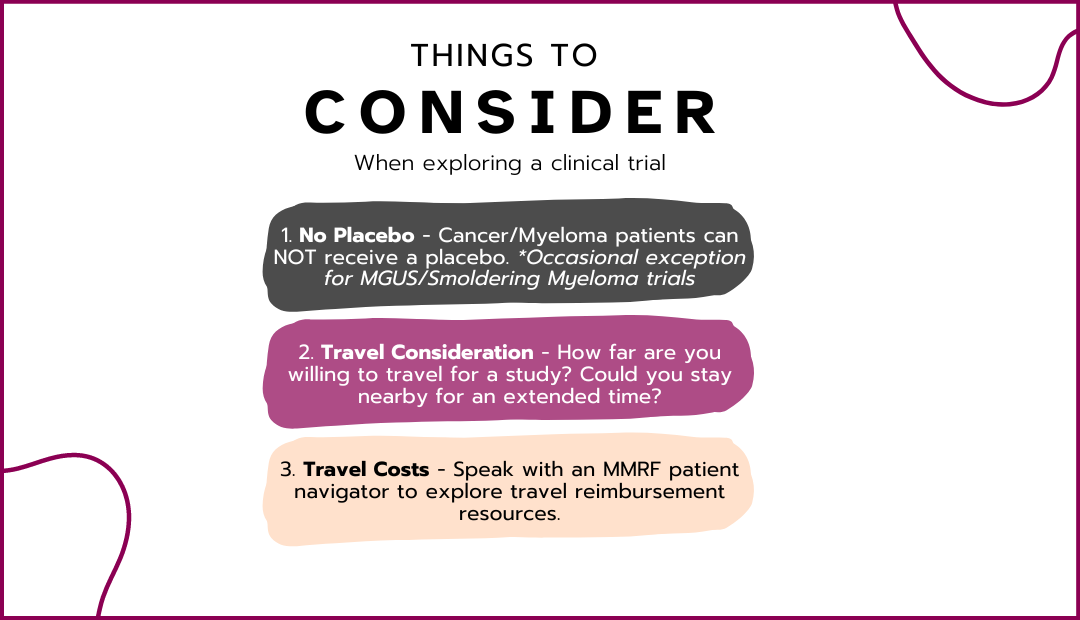18F-Fluciclovine PET/CT in Multiple Myeloma
NCT06103838
Age 18 - 120
Sex Both
Phase Phase 2
Third Opinion Trial Synopsis
In this clinical study, researchers are exploring a new treatment approach for patients with a specific type of blood cancer. The study focuses on using a combination of therapies to improve patient outcomes. Here are some key details about the study:
- The treatment involves a unique combination of therapies that target the cancer cells in different ways.
- Patients will receive a specific regimen that includes both established and novel therapies, which may enhance the effectiveness of the treatment.
- The study aims to assess how well this combination works compared to standard treatments.
- Participants will be closely monitored for their response to the treatment, including any side effects and overall health improvements.
- This study is designed to provide insights into how combining different therapies can lead to better management of the disease.
Third Opinion AI Generated Synopsis
Trial Summary
Background: Multiple myeloma (MM) is an incurable cancer of certain blood cells. MM often returns after treatment, and most people survive only 5 to 8 years after diagnosis. To improve survival, researchers need to find ways to identify returning disease earlier. Objective: To find out if the radiotracer 18F-fluciclovine (a substance injected into the blood during imaging scans) is better at detecting MM than the one (18F-FDG) currently used for this purpose. Eligibility: Adults aged 18 years or older with MM. The MM may be newly diagnosed (NDMM); or it may have returned or failed to respond after at least 1 prior line of treatment (RRMM). Design: Participants will be screened. They will have blood tests. They will have a positron emission tomography (PET) or computed tomography (CT) scan using 18F-FDG. The radiotracer will be injected into a vein. Then participants will lie on a table while the PET/CT scan takes images of their body. All participants will have 3 study visits. During each visit they will have: Two PET/CT scans. One with 18F-FDG, one with 18F-fluciclovine. An optional magnetic resonance imaging scan. A bone marrow biopsy. An area on the hip will be numbed; a needle will be inserted to draw out a sample of the soft tissue from inside the bone. These tests may be spread over 30 days for each visit. NDMM participants will have their second study visit 2 to 4 weeks after they complete their usual treatment for the disease. RRMM participants will have their second visit 6 months after their first. All participants will have a third study visit after 5 years or when their disease progresses.
Background: Multiple myeloma (MM) is an incurable cancer of certain blood cells. MM often returns after treatment, and most people survive only 5 to 8 years after diagnosis. To improve survival, researchers need to find ways to identify returning disease earlier. Objective: To find out if the radiotracer 18F-fluciclovine (a substance injected into the blood during imaging scans) is better at detecting MM than the one (18F-FDG) currently used for this purpose. Eligibility: Adults aged 18 years or older with MM. The MM may be newly diagnosed (NDMM); or it may have returned or failed to respond after at least 1 prior line of treatment (RRMM). Design: Participants will be screened. They will have blood tests. They will have a positron emission tomography (PET) or computed tomography (CT) scan using 18F-FDG. The radiotracer will be injected into a vein. Then participants will lie on a table while the PET/CT scan takes images of their body. All participants will have 3 study visits. During each visit they will have: Two PET/CT scans. One with 18F-FDG, one with 18F-fluciclovine. An optional magnetic resonance imaging scan. A bone marrow biopsy. An area on the hip will be numbed; a needle will be inserted to draw out a sample of the soft tissue from inside the bone. These tests may be spread over 30 days for each visit. NDMM participants will have their second study visit 2 to 4 weeks after they complete their usual treatment for the disease. RRMM participants will have their second visit 6 months after their first. All participants will have a third study visit after 5 years or when their disease progresses.
from ClinicalTrials.gov
Locations & Contact
Fill out the form and to let the Multiple Myeloma Research Foundation know you are interested in this trial.
Contacts:

